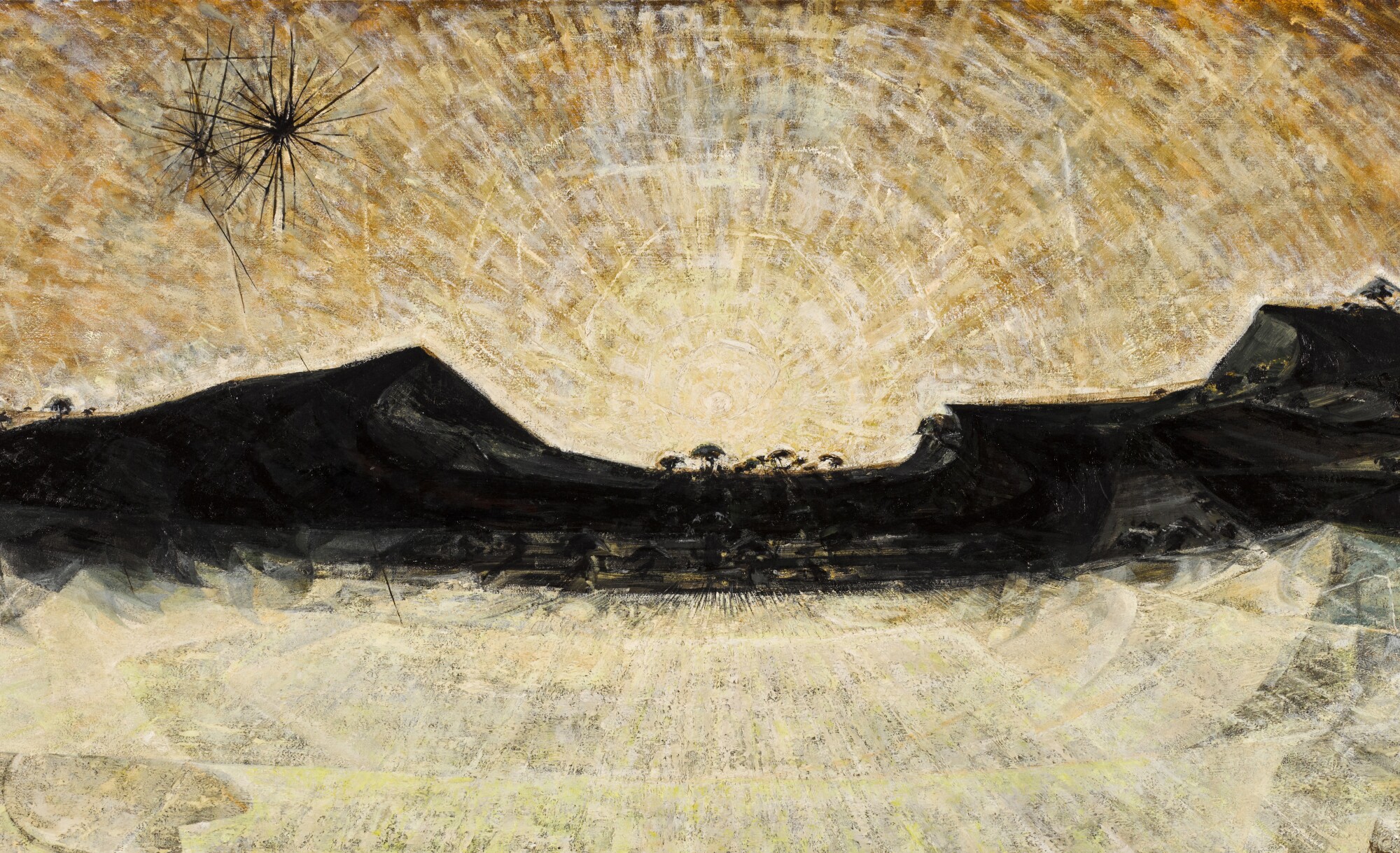Alan Reynolds’ Sunrise, painted in 1956/1957, stands as a luminous testament to the artist’s early mastery of the English landscape tradition, tempered with the nascent abstraction that would come to define his later career. Exhibited in the years following his much-lauded solo shows at the Redfern Gallery, this work captures a moment of transition for Reynolds whose practice originated in dialogue with the post-neo-romantic idiom yet increasingly moved towards a formal language of design, balance, and structure.
Reynolds had wished to become an artist from the age of 10, inspired by his father who was a self-taught draughtsman and took him on trips to the Fitzwilliam Museum in Cambridge. His early landscapes were often painted from memory or imagination, informed by fleeting impressions of the Suffolk fields and Kent hop gardens, and by his lifelong admiration for Paul Klee in particular.

The painting’s central focal point is the rising sun, from which the rest of the composition radiates outwards, rendered in short, sharp brushstrokes. The canvas’ upper register is bathed in warm, golden tones that suggest the light of dawn, while the lower half is suffused with cooler, brilliant yellows. The landscape is divided by the blackened, jagged forms of the distant hills, dappled with tree-like silhouettes that echo the black starbursts, now giving way to the sunrise’s glow. These forms ebb softly into the surrounding fields, an evocation of nature’s gentle but inevitable transformations.
Reynolds’ own words illuminate his approach:
‘Poetry is never absent from nature, but alone it cannot constitute a work of art. It must be reconciled with the elements of design and composition’
This philosophy is evident in Sunrise, where the poetry of the English landscape is fused with an emphasis on formal values — the interplay of vertical and horizontal, of organic form and geometric suggestion.
The art critic Robert Melville, a previous owner of this painting, wrote of Reynolds as:
‘the only painter I know who has succeeded in conveying to us his sense of scale stretched far beyond the limits of sight through the medium of visionary landscapes which remain in close correspondence with the appearance of the natural scene’
This is a painting characterized by the tension between the abstract and the figurative – Reynolds retains the integrity of the landscape, while using abstraction to capture this sense of the visionary, meditating on light, time and place.
Though by the late 1950s Reynolds’ work would pivot toward pure abstraction, embracing a constructed, modular language inspired by Mondrian and Concretism, Sunrise captures a pivotal moment in the artist’s development. It offers a bridge between the lyrical pastoralism of England’s landscape tradition and the rational, intuitive abstraction that would become the hallmark of his later practice.